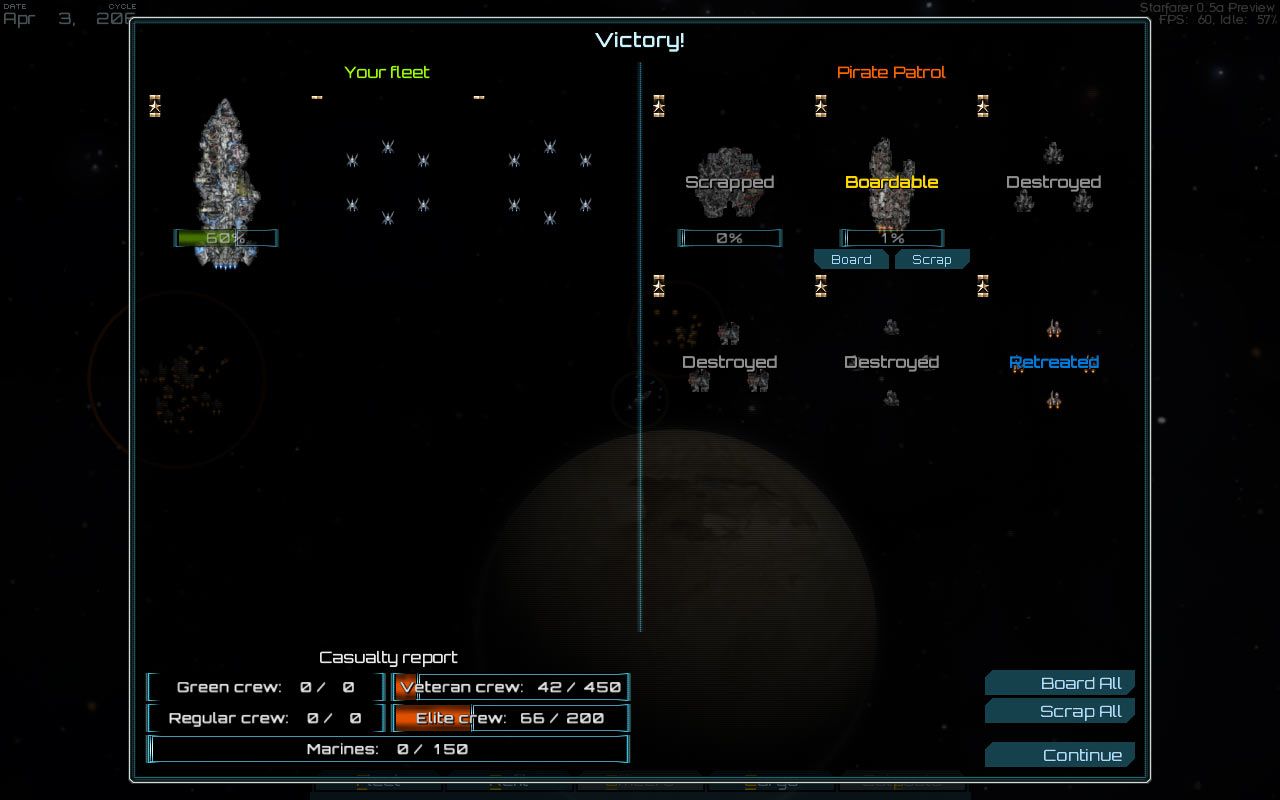Post-Combat Mechanics
Given that New Year’s is coming up, it’s only appropriate to talk about how you acquire shiny new stuff in Starfarer. Oh, wait… Christmas is the “presents” holiday, New Year’s is the “get drunk” one. Never mind! But just the same, that’s what I want to talk about. Shinies, not getting drunk.
… now that my feeble attempts at humor are over and done with, let’s continue.
Battles are a key way to progress through the game. They’re not the only way – you’ll be able to build up an economic power base, for example – but that’s not what this post is about. Battles offer an opportunity to get stuff for free, even if you don’t fancy yourself a pirate, but something slightly more honorable-sounding. The flip side is you can easily lose some hard-earned assets, too – ships, crews, even cargo if the outcome is bad enough.
What I’d like to do is outline the mechanics as they stand, talk a bit about the motivations for doing it this way, and sprinkle in a couple of screenshots. For the sake of this discussion, let’s assume the player won the battle. If they lost, things happen slightly differently, but it’s more or less a mirror image.
Casualties, Boarding, and Repairs
If you’ve played the combat portion of the game, you already know that instead of simply blowing up when hull integrity reaches 0, ships become floating, disabled hulks. There’s a small chance for each of these to be repaired after battle (most likely, player skills will allow you to raise that chance).
So a friendly ship can emerge from battle in the following ways:
- Completely unscathed or somewhat damaged
- Disabled and subsequently repaired, with a minimal hull integrity and heavily damaged armor (non-fighters only)
- Utterly destroyed (fighters and ships whose hulks are shot repeatedly until they blow up – unlikely for anything bigger than frigates)
- Disabled and beyond repair, and subsequently scrapped for any supplies
The options for enemy ships are slightly different. Retreating ships have a chance to be captured after battle, and the player has a choice between boarding and scrapping these. Disabled ships that can potentially be repaired can also be boarded or scrapped, while ones beyond repair are scrapped automatically.
Also, if a ship takes hull (not armor) damage, then there’s a good chance that some crew will be killed, in rough proportion to how much damage the ship actually took. It’s possible to win a battle and end up losing enough crew that you can’t meet the skeleton crew requirements to deploy most of your ships – so it’s a good idea to carry enough extra crew for these kinds of emergencies. Outside of combat, it’s assumed that automated systems let you get by well enough to navigate the ships, so even extensive crew losses won’t stop you from being able to move around the Sector.
 The Odyssey has taken some damage, but the pirate fleet has been eliminated as a combat threat
The Odyssey has taken some damage, but the pirate fleet has been eliminated as a combat threat























